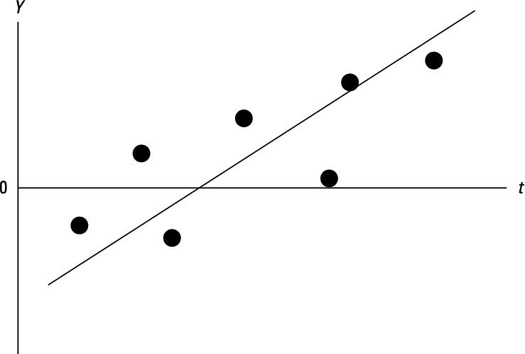It’s a new year – 2018 for those wondering – and with that comes a slew of new years resolutions and goals that you want to hit. Great!
However, most new years resolutions don’t get completed – with research showing the completion rate to be as low as 8%!
When my clients are setting their resolutions – usually fitness and health related but this process applies to any type –we go through a detailed 5 part process that harnesses the science of behavior change to help reach and surpass those goals.
1 – Set a specific & measurable new years resolution
The more ambiguous your goal is, the harder it is to create a detailed plan for, measure progress, and ultimately achieve. We want to fight against that haziness by increasing the clarity of your goals.
Therefore, “I want to get into shape” becomes “I want to lose 15 lbs while increasing my 5×5 deadlift by 30 lbs” or “I want to be able to stay in my 85% heart rate zone for 30 seconds for 5 intervals”
“I want to run more” becomes “I want to be able to run 15 miles straight” or “I want to shave 2 minutes off my 5k time”.
2 – Create measurable and digestible steps for your new years resolution
After creating a specific and measurable overlying goal, reverse-engineer it into measurable and incremental steps.
This is critical for creating momentum and a focus on the process rather than the outcome. If you focus on each small step, eventually you’re at the top of the mountain.
If the goal is – I want to run 15 miles without stopping – how do you get there in a measurable and incremental manner?
For example, lets say you can currently run .35 miles.
The rule of thumb for a safe running progression is no more than a 10% increase in training volume week over week. Using that formula, you create the following plan:
- End of January – run .5 miles (10% increase week over week within the month)
- End of February – run .7 miles
- End of March – run 1 mile
- End of April – run 1.4 miles
- End of May – run 2 miles
- End of June – run 2.8 miles
- End of July – run 3.9 miles
- End of August – run 5.4 miles
- End of September – run 7.5 miles
- End of October – run 10 miles
- End of November – run 14 miles
- End of December – 19.5 miles
Obviously 19.5 miles is greater than 15 miles but that 19.5 number assumes zero setbacks. That’s not a realistic assumption so you build in some margin for error.
3 – Practical strategies to complete your new years resolution
A. Incentivize at the start
Research has shown that creating an incentive for change– this can be something like a bet between friends or a reward for yourself – results in a greater likelihood for making that change.
Research has also shown that individuals who start strong when it comes to meeting a new goal are more likely to actually hit that goal (think of it as early momentum).
Combining both of these things, you can create a meaningful incentive that rewards yourself for meeting earlier steps – this creates immediate positive feedback loops and early momentum that is quite powerful in the long-run.
B. Building into your current routines
It’s easier to create and stick with a new habit if you build it into an already established routine. This is often referred to as “piggy-backing”.
If your goal is to read 15 minutes in the morning, then stick it after your AM coffee or walk. If your goal is to floss, then do it immediately after you brush your teeth.
You want the new habit to essentially meld into an already established older one.
C. Bundling Activities
Take an activity that you love to do – like watching your favorite show or listening to your favorite podcast or album – and combine it with the new activity.
This does three things: 1 – it creates constant incentive for the new activity; 2 – it creates a positive feedback loop for the new activity; 3 – it makes you feel less guilty about binge-watching the latest season of Stranger Things 🙂
4 – Identify impediments to your new years resolution
A. Self-Regulation
Are you short-term oriented or long-term oriented?
Different people have different extents to which they favor small immediate rewards vs larger future rewards. This is called “temporal discounting”.
Is the pleasure from that over-stuffed quesadilla and fries greater than the pleasure of eventually hitting your weight-loss goal and increasing your overall health?
There are strategies to help mitigate some of those impulses. These include:
- a clear and detailed plan
- a supportive coach
- episodic future thinking
- brain wave training
I will address each of these specifically in upcoming blog posts.
B. Stress
When we’re stressed, we default to our baseline behaviors and habits.
Therefore, it’s really important to be able to manage and mitigate potential or ongoing stress when you’re trying to change habits….so you don’t fall back into those old ones.
Stress can be related to almost everything, with some major factors being:
- sleep
- nutrition
- activity levels (including too low AND too high)
- interpersonal & social relationships/pressures (emotional stressors)
- occupation
- work/life balance
- phase of life (married with kids vs college student, each has it’s own stressors)
- daily life (commute times, mode of transport, etc)
- etc
Dealing with stress is always multi-factorial but imperative when trying to change behavior. There’s too much to unpack in this post alone so I’ll be detailing stress management strategies in future blog posts.
C. Practicality Within Your Schedule
This one is extremely important but oft over-looked. The plan you’ve created has to fit within your daily schedule and life.
If your goal requires setting aside some chunk of time -like training time in the gym – changing your daily schedule to accommodate that can be tough…but it’s certainly doable.
Here are two key things you can do:
- Go over your schedule and figure what part is most easily re-arranged – I call this the “soft spot”. Once you find that “soft spot”, carve out a chunk of time.
- At first, make that chunk of time relatively small – you want to make the initial change small enough that it’s palatable to your schedule and you don’t just say **** it.
Over time as you start seeing the positive impact from your new habit, it becomes naturally reinforcing, moves up on your priority list, and now it’s not as painful to carve out time for it (in fact, you might even look forward to it!).
5 – Assessing the progress of your new years resolution
Creating measurable steps – which was part of #2 in this process – defines a metric that we can use to measure progress. It gives us an objective marker of where we are.
When looking at those markers, it’s EXTREMELY important to understand that progress is not a straight line – we all certainly wish it was and it would make things a lot easier.
The key is being able to take a step back and see the trend line – are you tracking positively or negatively? In other words, are the ups greater than the downs?
Something that looks like this:
I cannot stress this point enough because all too often I’ll see a client who loses significant motivation or positive reinforcement due to a bad day or bad week…even though overall, he or she has come light years.
It’s so easy to get caught up and lost in the day to day – we really have to fight against that. That’s why having these objective markers/data – I call them “anchor points” – and understanding this idea of day to day vs trend-line change is so critical.
I sincerely hope you find this 5-part process to be helpful and I wish you all the best on your trials, tribulations, and successes in the new year and going forward.
Until next time.

